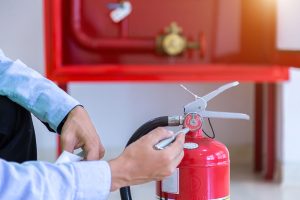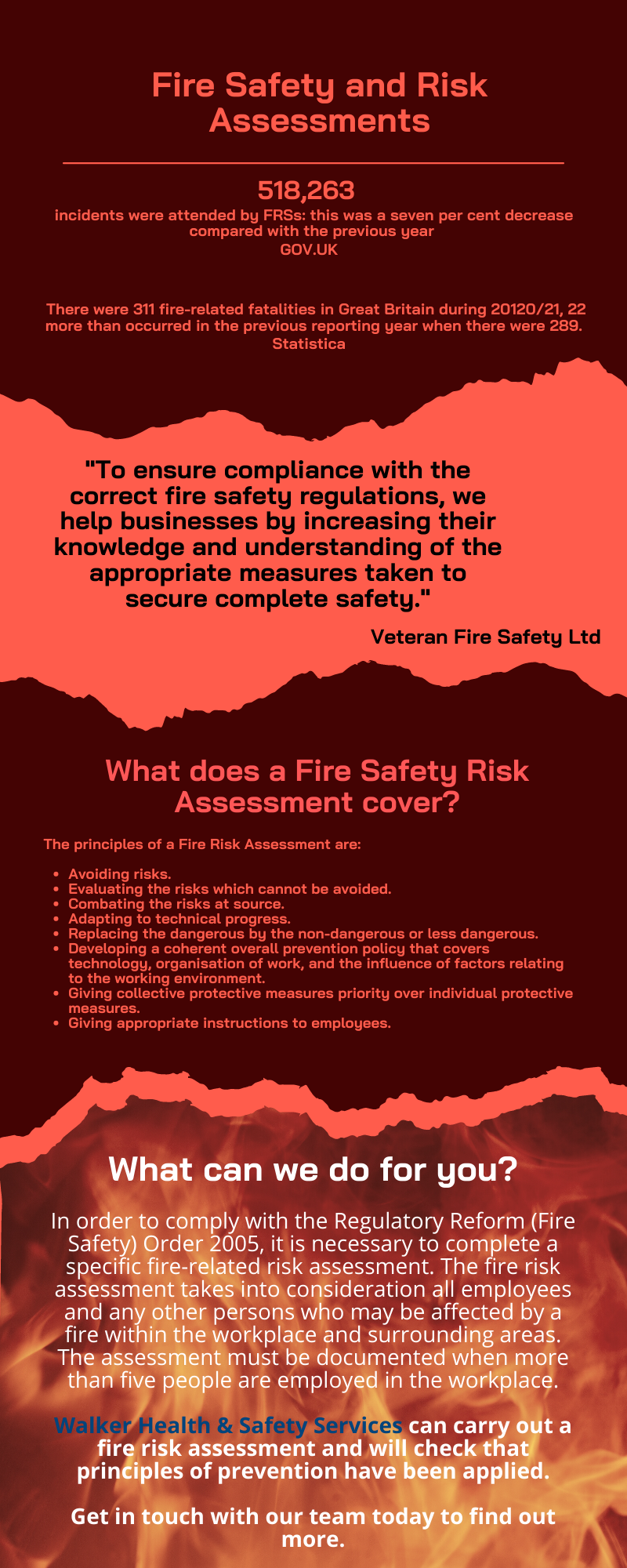 As part of an overall maintenance strategy, organisations should identify ageing fire precautions and have in place a regime to maintain such items.
As part of an overall maintenance strategy, organisations should identify ageing fire precautions and have in place a regime to maintain such items.
Many buildings will have fire precautions that can be described as physical assets that need to be properly maintained to ensure that they are fit for purpose and continue to function as efficiently and effectively as possible. This will ensure legal duties in relation to protecting relevant persons from the risk of fire are met.
All fire precautions will be subject to ageing, which if not managed appropriately can lead to equipment failure, which in turn can lead to future regulatory non-compliance, increased fire risks to life and greater business continuity issues in the event of a fire.
As part of an overall maintenance strategy, organisations should identify ageing fire precautions that may require a maintenance regime that goes beyond “best practice”, and put into place the regime to maintain such items.
Article 17 of the Regulatory Reform (Fire Safety) Order 2005 states that “where necessary in order to safeguard the safety of relevant persons the responsible person must ensure that the premises and any facilities, equipment and devices provided in respect of the premises under this Order … are subject to a suitable system of maintenance and are maintained in an efficient state, in efficient working order and in good repair”.
It should be noted that similar requirements are contained in the respective legislation for Scotland and Northern Ireland.
In this context, “where necessary” can be taken as meaning that the duty holder must do what is reasonable to protect relevant persons in terms of the maintenance needs of the facilities, equipment and devices provided under the Regulatory Reform (Fire Safety) Order 2005.
In turn, these can be described as the general fire precautions that will include measures:
The key part of Article 17 is the requirement for these elements to be maintained in an efficient state, efficient working order and good repair. Guidance for enforcing authorities notes that this is a three-part test that can be best described as follows.
Maintenance of general fire precautions is an essential part of the overall fire risk management framework and can form part of any formal enforcement procedures.
Government publication, Guidance Note No 1: Enforcement, states that risk assessments should include references to maintenance. It continues by stating that enforcing authorities are “expected to use their professional judgement in evaluating the maintenance of any equipment and devices provided in accordance with the risk assessment to protect all relevant persons in and around the premises from the dangers of fire”.
To meet the above requirements, those responsible for fire safety will normally adopt a regime of planned preventative maintenance based upon best practice (such as detailed in relevant British Standards) in conjunction with a reactive repairs regime in the event of defects occurring/being identified between maintenance schedules.
However, during its lifecycle all fire precautions can degrade due to age-related mechanisms and it may be the case that maintenance frequency and regimes could be required that are beyond those recommended in the British Standards. It is therefore essential that as part of the overall maintenance regime, such ageing is identified, considered and appropriate measures are taken to manage the risks.
When referring to ageing fire precautions, it is important to note that this does not necessarily relate to the chronological ageing process, rather ageing is “the effect whereby a component suffers some form of material deterioration and damage with an increasing likelihood of failure over the lifetime of the asset”.
As an example, a property can have fire door assemblies of the same age and specification throughout the premises, yet one assembly could be subject to greater ageing due to its location, frequency of use and potential for damage to occur through use.
The management of ageing fire precautions therefore begins with an awareness that ageing is not about how old the equipment is, but what is known about its condition, and the factors that influence the onset, evolution and mitigation of its degradation. This suggests that for those with responsibility for maintaining ageing fire assets, there is a need to:
As well as the physical ageing process, other factors will need to be given consideration. This can include obsolescence and a lack of spare parts or the disappearance of the original equipment manufacturer, or non-conformance with current safety requirements, codes, standards and procedures.
Competency, availability and organisation of the employees/contractors responsible for asset management are also essential to ensuring that this understanding of current and predicted asset condition is used when making asset management decisions.
BS 9997: Fire Risk Management Systems notes that organisations should “plan, document, implement and manage the processes for maintenance and testing of fire safety systems to ensure that they operate correctly in the event of fire”.
As part of this, an organisation may require an “ageing maintenance programme”. This should detail the actions necessary to ensure any ageing fire precautions are maintained in an efficient and cost-effective way. The main elements of such a plan will be as follows.
It should be noted that within an ageing maintenance programme there may be differing schedules from those in relation to statutory compliance requirements being met through normal best practice. Where this is the case, the ageing maintenance programme needs to interface with such compliance requirements.
It should be noted that management of ageing fire precautions will require regular monitoring, review and revalidation following any unwanted incidents, major repairs, refurbishment or replacement of key items.
Managing ageing fire precautions effectively may require a shift in the way fire asset condition is regarded, assessed and maintained. This requires a proactive approach with a thorough understanding of the fire asset ageing mechanisms and condition, and the ways in which assets interact (including cause and effect).
The characteristics of an “ageing asset” can be defined as when:
If you require further information, please contact us.
Lets face it, it’s easy to have the “it won’t happen to me” mentality when it comes to fire safety in your workplace. But the truth is, a fire can be catastrophic for your business, your employees and of course your brand reputation. This is why fire safety is an incredibly important aspect of risk management that needs to be taken seriously by every employee and manager in your business.
So, to help you improve the fire safety of your workplace, here are 7 precautions you must know to keep those detrimental fires at bay.
Appoint fire wardens
First and foremost, you should appoint at least one fire warden in your workplace. Fire wardens are members of staff who are responsible for taking control of creating and maintaining fire safety procedures. In the event of a fire, they’ll know how to keep employees, contractors and customers safe, and will be the person in charge coordinating the evacuation.
Stock relevant fire safety equipment
In the event of a fire in a workplace, having the right equipment is essential for alerting employees and members of the public, and potentially extinguish the fire before it gets any bigger and out of control.
With this in mind, ensure your workspace has working universal smoke alarms, the correct fire safety signs, fire escape ladders if necessary and fire prevention systems such as fire extinguishers and sprinklers.
Communicate appropriate fire escape routes
In the event of a fire, clear escape routes out of the building are absolutely vital. All escape routes must be easily identifiable and with instructions about the means of escape displayed. You also need to provide training for your employees on how to escape in the event of an emergency.
Escape routes must be adequately illuminated and free of any obstacles. As an employer, yourself or the fire warden should do daily checks to ensure these areas are not blocked in case a fire were to occur that day.
Keep your workplace tidy and clean
You don’t have to be a genius to work out that messy workplaces contain more health and safety hazards than tidy ones, and many of these hazards are related to fire safety.
Any spare stock should be stored safely, and appropriate control measures implemented to safely store flammable materials and liquids in line with COSHH regulations. You should also ensure that you are regularly removing combustible waste, including accumulations of dust, before it has a chance to build up and become a safety hazard.
Create a fire safety plan
When it comes to keeping your employees, contractors and visitors safe, it is crucial that you have a clear fire safety plan in place. Delivering a fire safety plan is also a legal requirement for workplaces operating in the UK and employers, business owners and landlords are all equally responsible for delivering an adequate fire safety plan.
If you’re unsure where to start, here is everything you need to know about how to create a fire safety plan for your workplace.
Carry out thorough risk assessments
You can’t effectively safeguard against fire if you’re not fully aware of the hazards in your workplace and the risks they pose. So before you begin implementing fire safety control measures, carry out a thorough risk assessment of your workplace.
For businesses with more than five employees, risk assessments are a legal requirement, but they’re also hugely important for protecting your business from harm.
Risk assessments should identify fire hazards i.e. what could cause a fire to start?
Then they should assess the level of risk posed, consider who could be affected, and how fire risks can be alleviated. You can then implement control measures proportionate to the level of risk. To ensure long-term fire safety in the workplace, it’s important to review and potentially revise risk assessments regularly.
Crack down on electrical safety
Last but certainly not least, don’t forget electrical safety! Most businesses will use electrical equipment of some sort – and where there’s electrical equipment, there are fire risks. Faulty wiring or overloaded plug sockets can overheat and spark fires that can quickly spread across the room.
To reduce the risk of electrical fires, repair or get rid of faulty electricals as soon as possible, don’t overload plug sockets, and make sure equipment is regularly inspected and PAT tested.
Contact us to discuss your requirements.
Guest blog by Kate, on behalf of Morsafe Supplies.
What is a fire risk assessment?
A fire risk assessment helps you to identify risks from fire hazards on your premises and work out what actions you need to take to make sure any risk is as low as reasonably possible.
Help with the fire risk assessment?
A responsible person must carry out and regularly review a fire risk assessment of the premises. This will identify what you need to do to prevent fire and keep people safe.
You can do the fire risk assessment yourself with the help of standard fire safety risk assessment guides. Alternatively, if you do not have the expertise or time to do the fire risk assessment yourself you need to appoint a ‘competent person’ to help, contact us for further details.
You’ll need to consider:
We have put together an infographic. I would recommend that you share the information with employees as it could be beneficial to them.
Contact us for further information.
